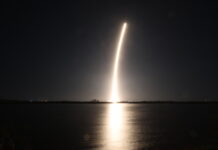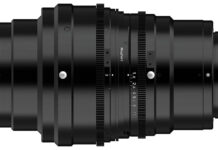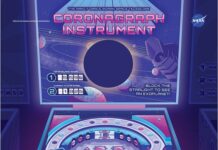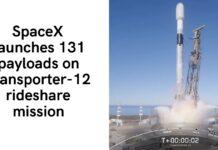The MESSENGER Mission: Overcoming Challenges to Unveil Mercury’s Mysteries
In 2009, Dr. Susan Niebur conducted a series of oral history interviews that shed light on the journey of the MESSENGER mission to Mercury. These interviews, part of NASA’s Discovery Program, reveal the technical hurdles, budgetary constraints, and scheduling challenges faced by the MESSENGER team. This article aims to provide an informative overview of the MESSENGER mission, from its inception to its launch, focusing on the dedication and resilience of the team behind it.
The Genesis of MESSENGER
The MESSENGER mission was first conceptualized by the Johns Hopkins University Applied Physics Laboratory (APL) following NASA’s 1996 Discovery Program Announcement of Opportunity. If accepted, it would be the first spacecraft to visit Mercury since Mariner 10’s flybys in 1974. The initial step for APL was to find a principal investigator (PI) who could lead this ambitious project.
Andrew F. Cheng, MESSENGER Co-Investigator, emphasized the importance of selecting the right PI:
"Scientific qualifications are necessary, but that’s not even the biggest part of it. It’s knowing something about missions, seeing how they work with engineers, and handling program management. PIs must delegate effectively because these projects are so huge."
Sean Solomon, MESSENGER Principal Investigator, recounted his initial involvement:
"APL decided they could do a Mercury orbiter mission. They were doing NEAR [Near Earth Asteroid Rendezvous] at the time and had ambitions for more solar system exploration. I got a call from John Appleby, who was looking to put together a team of scientists for a Discovery proposal, a Mercury orbiter."Solomon, who had not focused on Mercury for nearly 20 years, found the opportunity appealing. Despite his enthusiasm, he was initially unaware of the complexities involved, particularly in risk management and evaluating project managers.
The First Proposal
The first proposal for the MESSENGER mission made it to the second round of competition but faced significant setbacks. Solomon admitted:
"We were sharply criticized for our solar arrays, which had to face the Sun. We hadn’t done enough testing to be absolutely confident, and our budget did not come together in a way that could be shared with the team."The team regrouped and submitted a revised proposal in 1998, addressing the issues identified in the first attempt. This time, the proposal was accepted for development on July 7, 1999.
The Second Proposal and New Challenges
The second proposal benefitted from changes in the team and a more thorough approach to risk management. Solomon recalled:
"We had to solve the solar array problem, and APL did that by developing a testing protocol and validating our models."Despite this progress, other challenges arose. In 1999, two Mars missions, the Mars Climate Orbiter and the Mars Polar Lander, failed. This led to the establishment of the NASA Integrated Action Team (NIAT), which imposed new mandates for risk avoidance on all small missions, including MESSENGER. These new requirements significantly impacted the planned budget and timeline.
Tom Krimigis, APL Space Department Head, expressed his frustration:
"We felt sort of punished, even though we were innocent. Mandates were imposed without consideration for the schedule and cost."Ralph McNutt, MESSENGER Project Scientist, added:
"We were told, ‘Well, things are going to happen differently.’ We had to ask for more money, and Sean ended up giving presentations to four NASA advisory subcommittees."Despite these challenges, the team continued to push forward.
Technical and Managerial Hurdles
As the mission development progressed, delays from subcontractors and cost reviews at NASA Headquarters added to the team’s worries. David Grant, MESSENGER Project Manager, noted:
"There were serious problems with program cost and schedule. We had issues with the Inertial Measurement Unit (IMU) and the solar array substrates."The team faced a tough mission, requiring careful management of spacecraft weight, propulsion, and thermal systems. The complexity of the mission meant that delays and cost overruns were almost inevitable.
The Launch and Beyond
Despite the mounting delays and costs, the team aimed for a March 2004 launch date. However, Sean Solomon explained that they had to consider alternative launch windows:
"We were working toward a schedule for a March 2004 launch, but we had backup windows in May and August 2004. The August launch was less desirable due to a longer cruise time and higher costs."David Grant described the intense efforts to meet the launch date:
"We had an 18-person team working double shifts, sometimes seven days a week. But as we approached the March launch date, it became clear we wouldn’t make it. We recommended a schedule slip to May 2004."Ultimately, the team had to opt for the August 2004 launch window. The launch finally took place on August 3, 2004, but not without additional stress from weather conditions and last-minute concerns about the spacecraft’s autonomy system.
Sean Solomon recounted the launch day:
"We launched on the second day of an almost 3-week window. Vestiges of a tropical storm had stopped us the day before, but the next night everything was go."Post-Launch Challenges
After the successful launch, the team had to catch up on mission and science planning due to the delays. David Grant highlighted the ongoing challenges:
"We had to redo all the mission planning and learn how to fly the spacecraft. The initial operation was difficult, with issues like unknown center of gravity and plume impingement."Despite these difficulties, the engineering team remained diligent, addressing each problem systematically. Over time, MESSENGER proved to be an excellent spacecraft, capable of fulfilling its mission objectives.
Conclusion
The MESSENGER mission exemplifies the resilience and dedication required to overcome significant technical, managerial, and financial hurdles in space exploration. From its inception to its launch, the MESSENGER team demonstrated unwavering commitment to unveiling the mysteries of Mercury. Their journey serves as an inspiring example of human ingenuity and perseverance in the face of adversity.
For more Information, Refer to this article.
































